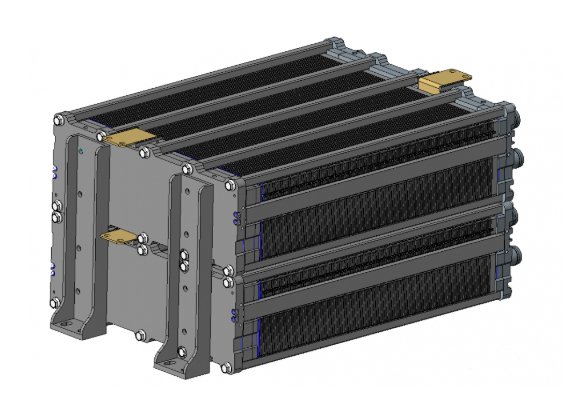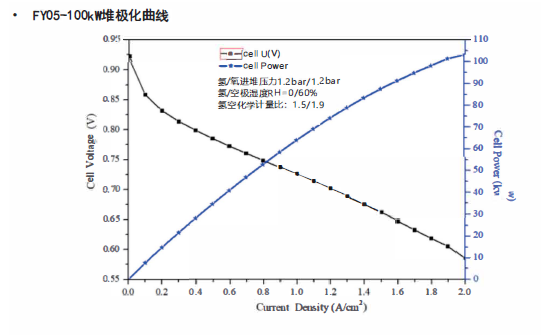
FY05 TYPE
Proton exchange membrane fuel cell stack
Water cooled graphite reactor with power ranging from 5kW to 150kW
The product is in the form of single or double stack
Product advantages
long life
The design life is more than 20,000 hours.
High reliability
Many models have been verified for a long time and have long mileage, and the performance is stable and reliable.
Strictly follow the requirements of IATF16949 for forward development, and have undergone various rigorous tests such as high and low-temperature storage, vibration, cold start, and waterproofing.
High adaptability
Platform-based design, which can be combined with a single stack, dual stack, or multiple stacks, flexibly responds to different application requirements.
The volume power density in the end plate is 4.2kW/L, and the stack is small in size, which can be easily adapted to passenger cars, commercial vehicles, and other non-mobile application scenarios.
It is not sensitive to relatively dry hydrogen and air, low reactor temperature, different gas pressures, or low gas metering ratios can run stably under various conditions, and shows good adaptability to various operating conditions and systems sex.

Detailed parameters of typical stack type of FY05 series stack
| Item stack | FY05-80K | FY05-100K | FY05-150K |
| FY05-150K | 80 | 100 | 150 |
| Rated voltage (V) | 131 | 172 | 256 |
| Dimensions (length X width X height; mm) | 657X421X158 | 827X421X158 | 657X421X327 |
| Anode/Cathode Gauge Debbie | 1.2 to 2; Cathode 1.6 to 2.2 | ||
| Medium pressure (kPaG) | Anode: 30 to 170, within 20kPa of equal or high thousand cathode; 30 to 150 of cathode | ||
| Coolant temperature (C) | The cooling liquid enters the reactor at 30 to 75C, and the temperature difference at the outlet is within 12C; it can operate stably at a lower reactor temperature | ||
| Media Humidity (CRH) | Anode: 0 to 50%; Cathode: 20% to 100%; stable operation in drier gas conditions | ||
| Three-chamber flow resistance (kPa) | Anode: ≤20; Cathode: ≤50; Coolant: ≤70; | ||
| Vibration resistance/Shock performance | Youqian GB/T 33978-2017, GB/T 36288-2018 requirements | ||
| Cold start performance | -30°C without external assistance, 65 seconds | ||
